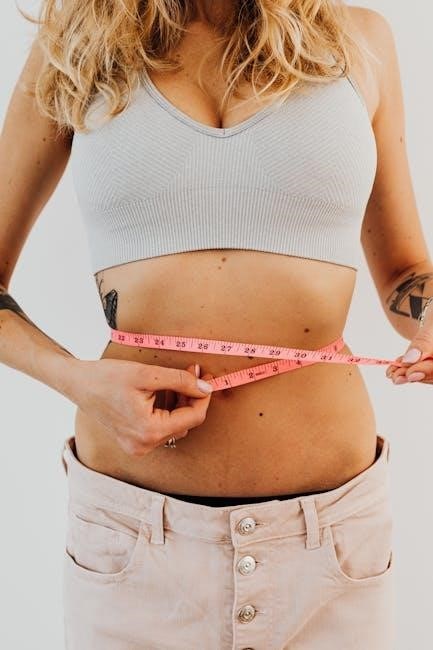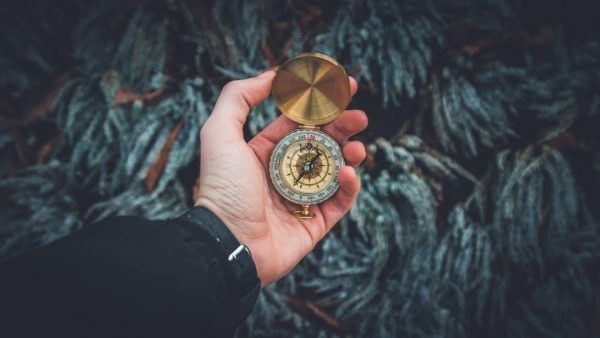Understanding your bra measurements is essential for comfort and support. It ensures proper fit‚ preventing discomfort and health issues. Learn how to measure accurately for the best results.
Why Accurate Bra Measurements Matter
Accurate bra measurements are crucial for ensuring a proper fit‚ which directly impacts comfort and daily wearability. A well-fitting bra prevents discomfort‚ such as digging straps or restrictive bands‚ and reduces the risk of long-term health issues like poor posture or skin irritation. Proper fit also enhances confidence and allows for a full range of motion‚ making it easier to engage in physical activities. Additionally‚ the right size ensures optimal support‚ which is essential for maintaining breast health and preventing strain on the shoulders and back. By taking the time to measure correctly‚ you can avoid common fit issues and enjoy a more comfortable‚ confident lifestyle. It’s an investment in both your health and self-assurance.
How to Measure Your Band Size
To measure your band size‚ wrap a tape measure snugly around your ribcage‚ directly under your bust‚ keeping it level and parallel to the floor. This determines your band size and is a crucial starting point for a proper fit.
Step-by-Step Guide to Calculating Your Band Size
Stand upright and wrap a flexible tape measure around your ribcage‚ directly under your bust‚ keeping it snug but not tight. Ensure the tape is parallel to the floor.
The measurement in inches is your band size. For example‚ if the tape reads 32 inches‚ your band size is 32.
If the number is odd‚ add 1 inch to get your closest even band size (e.g.‚ 33 becomes 34).
To verify‚ raise your arms slightly; if the tape moves up‚ adjust and remeasure.
This ensures a comfortable‚ supportive fit‚ as the band provides most of the bra’s stability.
Avoid measuring over clothing or while wearing a tight bra for accuracy.
Repeat periodically‚ as your size may change over time due to weight fluctuations or other factors;

Understanding Cup Size
Cup size reflects breast volume relative to the band size‚ ensuring proper fit and comfort. It is determined by the difference between bust and band measurements‚ with each inch representing a cup size (A‚ B‚ C‚ etc.).
How to Determine Your Cup Size
To determine your cup size‚ subtract your band measurement from your bust measurement. Each inch of difference corresponds to a cup size (A‚ B‚ C‚ etc.). For example‚ if your band is 34 inches and your bust is 36 inches‚ the difference is 2 inches‚ resulting in a B cup. Ensure accurate measurements by standing upright and wearing a non-padded bra. If the difference is less than 1 inch‚ you are an AA cup; This method provides a clear guide to finding your correct cup size‚ ensuring a comfortable and supportive fit. Regularly check your measurements‚ as sizes may change over time due to various factors.

Bra Size Conversion Chart
Compare US‚ UK‚ EU‚ and Australian bra sizes with this chart. It provides equivalent sizes‚ ensuring a consistent fit across different regions and brands globally.
US‚ UK‚ EU‚ and Australian Bra Size Equivalents
Understanding bra size equivalents across regions is crucial for international shopping. US sizes differ from UK‚ EU‚ and Australian systems‚ with variations in both band and cup measurements. For example‚ a US 34B is equivalent to a UK 34B‚ EU 75B‚ and Australian 12B. Cup sizes also vary slightly‚ as a US D cup corresponds to an EU E cup and a UK DD cup. To ensure accuracy‚ refer to a detailed conversion chart‚ as differences in sizing standards can lead to discrepancies. This guide helps you navigate global sizing systems‚ ensuring a perfect fit no matter where you shop. Accurate conversions empower you to find your ideal bra size effortlessly.

Choosing the Right Bra Style

Selecting the right bra style enhances comfort and confidence. Opt for balconette bras for a natural shape‚ plunge bras for low-cut outfits‚ or full-cup bras for maximum support.
Balconette‚ Plunge‚ and Full-Cup Bras Explained
A balconette bra offers a natural shape with wide-set straps and partial cup coverage‚ ideal for creating a seamless look under low-cut tops. Plunge bras feature a deep front‚ perfect for pairing with plunging necklines‚ while providing support and a flattering cleavage. Full-cup bras‚ designed for maximum coverage and support‚ are best for larger busts‚ minimizing spillage and offering comfort for everyday wear. Each style caters to different needs‚ ensuring confidence and ease for various occasions and outfits.

Common Bra Fit Issues and Solutions
Address issues like band riding up‚ cups gapping‚ or straps digging in by adjusting fit‚ ensuring snug bands‚ and exploring styles that suit your body type.
Troubleshooting Band‚ Cup‚ and Strap Fit Problems
Common issues include bands riding up‚ cups gapping‚ or straps digging in. For a too-tight band‚ try loosening or opting for a larger size. If the band is too loose‚ tighten the straps or size down. For gapping cups‚ ensure proper fit by adjusting the straps or trying a smaller cup size. If the cups overflow‚ consider a larger cup size or a different style. Straps digging into shoulders may indicate a too-tight fit; loosen them or explore bras with cushioned straps. Addressing these issues ensures comfort‚ proper support‚ and a flattering fit. Regular check-ins with your measurements can help maintain the best fit over time.

Expert Tips for Perfect Bra Fit

Professional fitters recommend regular measurements to ensure accuracy. Experiment with styles to find your best fit‚ and prioritize proper bra care for longevity and comfort.
Professional Fitting Advice and Maintenance Tips
Professional bra fitters can provide personalized recommendations based on your body type and lifestyle. Schedule regular fittings‚ especially after significant weight changes or pregnancies. When trying bras‚ ensure the band lies flat‚ straps adjust comfortably‚ and cups contain your breasts fully. Wash bras gently by hand or in a mesh laundry bag to preserve elasticity and shape. Replace bras every 6–12 months or when they show signs of wear. Store them properly to maintain their structure. For sports activities‚ opt for high-impact bras designed for your cup size. Regularly check the fit of your bras to ensure ongoing comfort and support.
Accurate bra measurements ensure comfort‚ confidence‚ and proper support. By following this guide‚ you can find your perfect fit and enjoy better health and style benefits.
Final Thoughts on Achieving the Perfect Bra Fit
Achieving the perfect bra fit is a journey that combines accurate measurements‚ understanding your body‚ and exploring styles. Properly measuring your band and cup size ensures comfort and support‚ while trying different bra types like balconette‚ plunge‚ or full-cup bras can enhance your silhouette. Regularly checking your size and seeking professional fittings can make a significant difference. Remember‚ a well-fitting bra boosts confidence‚ improves posture‚ and reduces discomfort. By following this guide and staying informed‚ you can enjoy the benefits of a perfect fit tailored to your unique needs and preferences.




